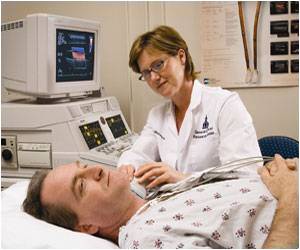A monkey would probably never agree that it is better to give than to receive, but they do apparently get some reward from giving to another monkey.
During a task in which rhesus macaques had control over whether they or another monkey would receive a squirt of fruit juice, three distinct areas of the brain were found to be involved in weighing benefits to oneself against benefits to the other, according to new research by Duke University researchers.
The team used sensitive electrodes to detect the activity of individual neurons as the animals weighed different scenarios, such as whether to reward themselves, the other monkey or nobody at all. Three areas of the brain were seen to weigh the problem differently depending on the social context of the reward. The research appears Dec. 24 in the journal Nature Neuroscience.
Using a computer screen to allocate juice rewards, the monkeys preferred to reward themselves first and foremost. But they also chose to reward the other monkey when it was either that or nothing for either of them. They also were more likely to give the reward to a monkey they knew over one they didn't, preferred to give to lower status than higher status monkeys, and had almost no interest in giving the juice to an inanimate object.
Calculating the social aspects of the reward system seems to be a combination of action by two centers involved in calculating all sorts of rewards and a third center that adds the social dimension, according to lead researcher Michael Platt, director of the Duke Institute for Brain Sciences and the Center for Cognitive Neuroscience.
The orbital frontal cortex, right above the eyes, was activated when calculating rewards to the self. The anterior cingulate sulcus in the middle of the top of the brain seemed to calculate giving up a reward. But both centers appear "divorced from social context," Platt said. A third area, the anterior cingulate gyrus (ACCg), seemed to "care a lot about what happened to the other monkey," Platt said.
Based on results of various combinations of the reward-giving scenario the monkeys were put through, it would appear that neurons in the ACCg encode both the giving and receiving of rewards, and do so in a remarkably similar way.
The use of single-neuron electrodes to measure the activity of brain areas gives a much more precise picture than brain imaging, Platt said. Even the best imaging available now is "a six-second snapshot of tens of thousands of neurons," which are typically operating in milliseconds.
What the team has seen happening is consistent with other studies of damaged ACCg regions in which animals lost their typical hesitation about retrieving food when facing social choices. This same region of the brain is active in people when they empathize with someone else.
"Many neurons in the anterior cingulate gyrus (ACCg) respond both when monkeys choose a drink for themselves and when they choose to give a drink to another monkey," Platt said. "One might view these as sort of mirror neurons for the reward system." The region is active as an animal merely watches another animal receiving a reward without having one themselves.
The research is another piece of the puzzle as neuroscientists search for the roots of charity and social behavior in our species and others. There have been two schools of thought about how the social reward system is set up, Platt said. One holds that there is generic circuitry for rewards that has been adapted to our social behavior because it helped humans and other social animals like monkeys thrive. Another school holds that social behavior is so important to humans and other highly social animals like monkeys that there may be some special circuits for it, Platt said.
This finding, in macaques that have only a very distant common ancestor with us and are "not a particularly prosocial animal," suggests that "this specialized social circuitry evolved a long time ago presumably to support cooperative behavior," Platt said.
Source:Duke University












